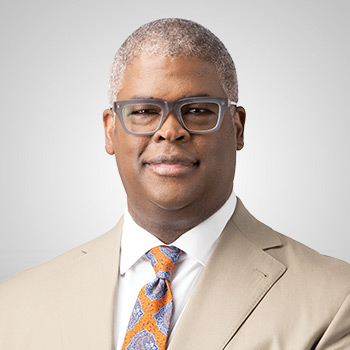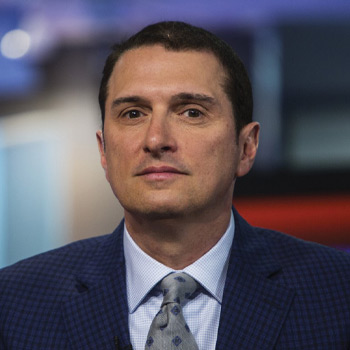My assessment of gold’s future is based, first and foremost, on the metal’s ability to serve as a currency and the strong likelihood — I would call it a near certainty — that a new global gold standard will be introduced, probably by the Chinese, suggests Stephen Leeb, editor of Real World Investing.
Unlike last century’s gold standard, where currency values were fixed at particular prices, the new standard will allow gold to fluctuate based on some objective measure of overall world economic activity. Gold is the ideal asset as a standard because its supply is relatively fixed and likely to remain so for the foreseeable future.
My best guess is that the new monetary order will center around a broad-based basket of digitally linked currencies backed by gold. Of necessity it will require a massive reflation in gold’s price.
For starters, realize that since Bretton Woods, which established the last gold standard, the dollar value of the world’s economy has multiplied by 200-fold as a result of productivity gains, population growth, and inflation.
A 200-fold increase in gold’s then-value of $35 – meaning gold at $7,000 an ounce — would likely be just the beginning once it becomes apparent that some version of a worldwide gold monetary system is being actively considered.
The expansion of GDP since Bretton Woods is just one of the factors that will push up gold. Another is global debt. Any approach to resolving the debt issue will likely multiply the initial $7,000 target price by many times, as will the global growth that will continue to occur during the discussion and implementation phases of the new monetary standard.
It took about two years for the participating countries to agree on Bretton Woods and more than a decade before Bretton Woods was fully employed. In all, the initial setting of gold’s price as a new monetary system gets underway is likely to be at least several times the initial target — a gargantuan gain from today’s level.
But why has gold’s performance over the past year — really, the past 18 months or so — been so disappointing? Ironically, the answer may lie in gold’s long-term potential. Why? Because once gold really starts to soar, the dollar, especially given all the dollar creation by the Federal Reserve, could lose its grip and become, de facto, merely an alternative currency — something Western financial institutions are avid to avoid.
Gold (unlike cyber currencies) already is recognized as a currency and is on the balance sheet of central banks. But the most active markets in gold are derivative paper markets, in which participants trade with enormous leverage.
How leveraged? In a typical year, 10 times the amount of gold ever mined is traded on paper gold markets. This makes the paper market a much more important price setter for the metal than actual supply and demand for physical gold.
It also means gold’s price can be easily manipulated. This is not some sort of far-out conspiratorial notion. J.P. Morgan recently was fined about $1 billion for manipulating the metal markets. I can’t prove that gold is still being manipulated. But it’s certainly true that for such a massive bank, a $1 billion fine is little more than a slap on the wrist. And while manipulation is a criminal offense, no charges, not even minor ones, were leveled against the bank.
Today every indicator you can find is positive for gold. Inflation is high and still rising. Money printing has been frantic. And real interest rates are negative, which means you lose money by investing in bonds. Yet gold has meandered for a year and a half. And, of course, these same indicators that are so positive for gold are negative for the dollar. It adds up to a strong circumstantial case that manipulation has continued.
But if there are forces pulling all the levers to hold gold down, they can’t do so forever. The game will come to an end once China takes the next steps towards a new monetary system. And at that point, when there’s a credible suggestion that gold will back a new reserve currency, the gold market will skyrocket literally overnight, as anyone engaged in price manipulation will need to cover short sales.
Currently, the only real pushback from the apparent manipulation has come when gold’s price has dropped sharply. Some entity, or the public at large, is willing to buy aggressively on serious dips.
So far that interest in gold is asymmetric in that whoever is willing to support the metal is not yet willing to buy aggressively enough to push the metal higher. That will end with a massive bang — it is just a question of when. For gold investors, this is the time to get extremely aggressive, because your downside is limited, while your upside is as close to limitless as has ever been true for any major asset.
One question may have occurred to you: What if the U.S. balks at joining a new monetary order and instead chooses to vie with China on currency as well as on everything else? It’s clearly a real possibility given the growing anti-China sentiment here, one of the few things the major political parties seem to be able to agree on. Would gold still be a good investment?
Yes, because such a scenario would foster the kind of turmoil under which gold always flourishes. But I hope things play out differently, because I believe strongly that persisting in viewing China solely as an adversary is a huge – a tragic – mistake that would backfire and hurt everyone, including us.
The reality, however unpalatable, is that we can’t go it alone. The world faces huge existential challenges that transcend national boundaries, revolving around resource scarcities and climate change. Meeting these challenges will require the world to come together and collaborate in a united effort that makes use of the best technology, the best research, and the best practices.
And the U.S. no longer has a monopoly on these. China, like it or not, is catching up with us and in some areas already has surpassed us. To cite one area, a recent study by the Kennedy School at Harvard University and Google researchers concluded that China now is ahead in many foundational technologies. At the current pace of both countries, China will soon have an edge in virtually all foundational technologies.
Cooperating in research and in other ways that will be mutually beneficial — including participating in a new monetary system — will offer the U.S. its best chance of regaining its former glory, which I believe we have recklessly squandered in the past half century as we increasingly focused on instant gratification and forewent long-term planning.
It’s a theme I address in detail in my latest book China’s Rise and the New Age of Gold, including explaining why I see our abandonment of the gold standard in the early 1970s as a seminal event that took away any incentive to make disciplined choices. But if we’ve been on the wrong track for the past several generations, we have a chance to reverse course here.
We don’t have to approve of China’s political system or all of its actions to work with China to solve existential threats. We work in various ways with all kinds of countries that do things we don’t like, from the Philippines to Egypt to Saudi Arabia.
To sum up: Under any conceivable scenario — cooperative efforts or the greater tumult that would result from their absence — gold is headed higher and in all likelihood a lot higher. If you haven’t yet bought gold-related investments, or want to increase your exposure, you couldn’t ask for better timing. Your downside is likely less than 10%, while your upside is the moon.



















